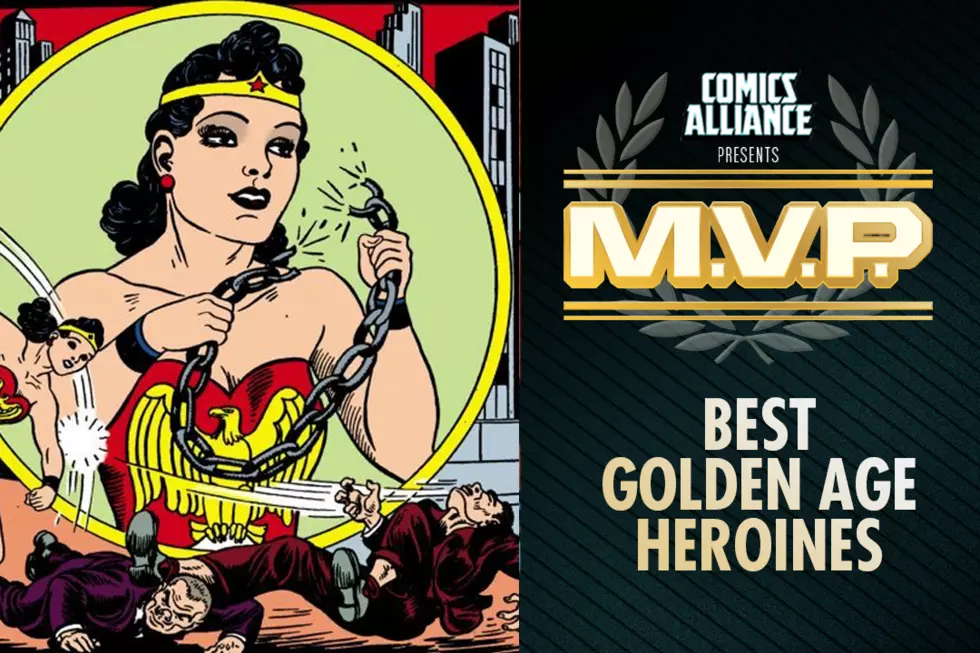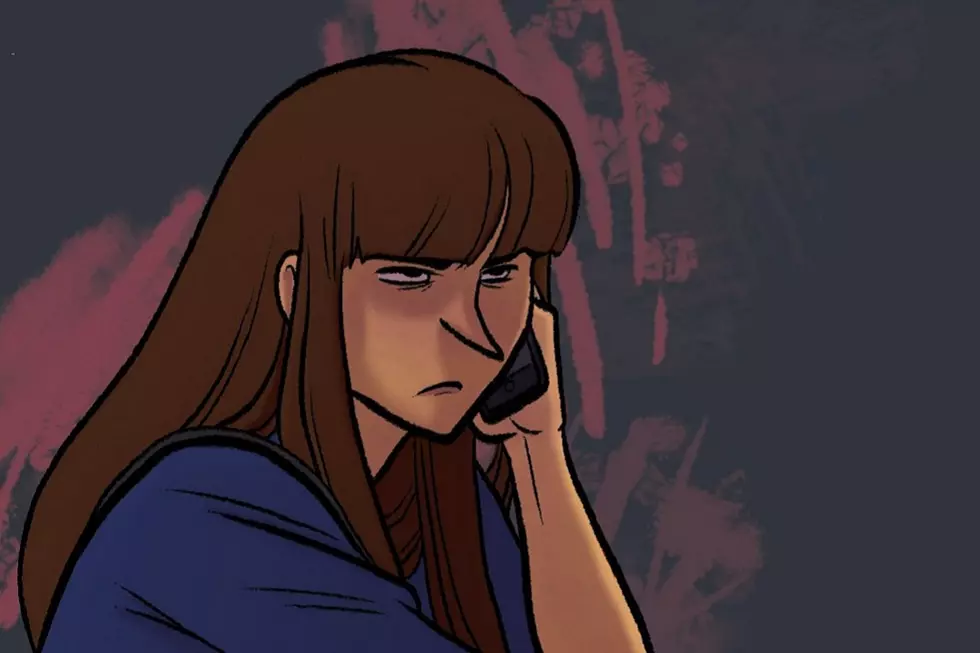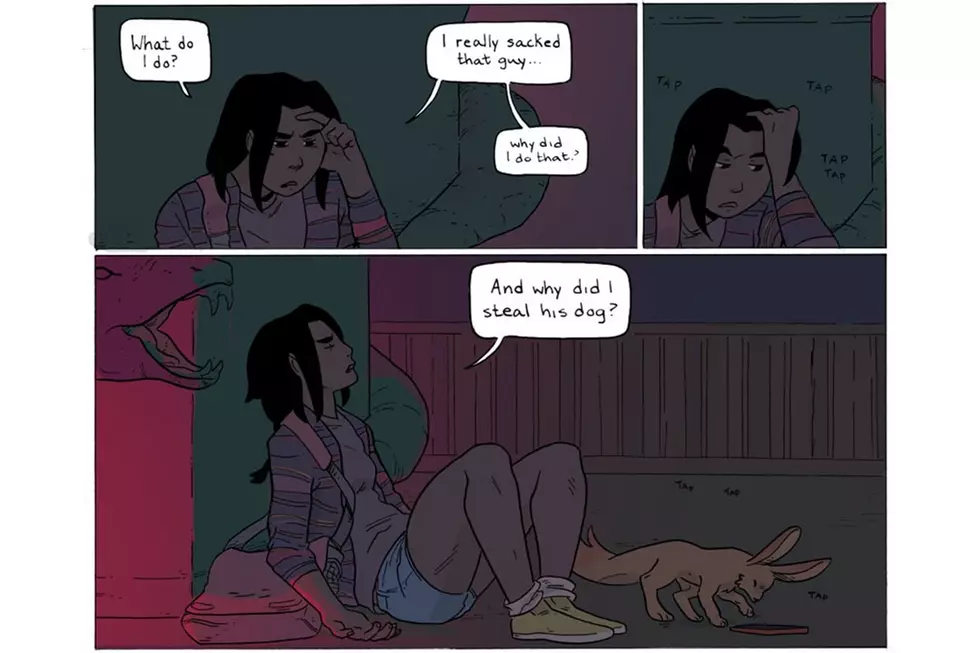
Comics Alliance Presents The Question: What’s The Best Comic About Women By Women?
The comics world is full of questions, from, “Who would win in a fight?” to, “Who came up with that weird idea?” Here at ComicsAlliance, we spend a lot of time thinking about all of it, from the big questions that matter a lot to the small ones that probably don’t matter at all but are still kinda fascinating. With The Question, we’re going to give our writers the opportunity to answer some of these brain-ticklers, because if we’re thinking about these things, you might be thinking about them too.
This time we asked our writers; what's your favorite comic by women about women? This year's Ignatz and Eisner wins suggest that women in comics are beginning to get the recognition they deserve, both as creators and as an audience. But there have always been great comics by women and great comics about women, and some comics that are both, and they exist across genres, borders, and cultures.
So what are the best comics by women about women? Here are our answers. Feel free to add yours in the comments!
PERSEPOLIS
Marjane SatrapiMarjane Satrapi’s Persepolis holds a well earned place amongst the greatest graphic novels ever created, providing an intimate look into Iranian culture and history from the perspective of Satrapi’s autobiographical child avatar.
Beginning in 1980, one year after the Islamic Revolution, Persepolis opens under the title, 'The Veil', with Marji in her classroom alongside her fellow veil-clad friends, something that, post-revolution, was made compulsory. At the bottom of the page, in stark contrast, the girls run around swinging veils above their head or using them as skipping ropes — political and religious complexities being hard for children to understand.
In a way this first page sums up the brilliance of Persepolis and sets a pattern for what is to follow — the adult Satrapi speaks through the mouth of young Marji, providing a curious mix of innocence and reflective knowing, and pages often make use of sharply contrasting scenes to heighten meaning. A joyful depiction of children dancing at a party is brutally situated above a panel showing children of the same age being blown apart by war.
Rendered in stark black and white, Satrapi infuses her sequential storytelling with nuance and detail. Text alone does not do this tale justice, and her imagery is proof positive of how powerful graphic communication can be. [Laura Sneddon]
SAILOR MOON
Naoko TakeuchiWhere do I begin with Sailor Moon? Perhaps I should mention that it's the reason I am here with you right now. A friend of mine handed me the first volume in 6th grade — my very first comic — and fifteen years later, I'm writing about it. Sailor Moon was the game changer, the comic that effectively launched the magical girl genre. Sailor Moon isn't just the reason why I'm here; it's the reason why you're here. It's the reason you picked up Power Up or Zodiac Starforce. That comic you read when you were 10 is the reason you're here right now, and that is power, my friends.
And then there's the nuts and bolts. The use of traditionally feminine items and/or characteristics as weapons — make-up, kaleidoscopes, tiaras. A plot point in which Sailor Moon cries and those tears fend off an attack! We can also talk about fashion — the changing of outfits being key to power performance with so many gorgeous options for heroines and villains alike. We can also chat about the queer representation of Sailors Neptune and Uranus, or just the significance of having an imperfect protagonist who didn't do well in school and liked video games. As far as comics by women and for women are concerned, Sailor Moon is hard to beat. [JA Micheline]
PRETTY DEADLY
Kelly Sue DeConnick, Emma Rios, Jordie BellairePretty Deadly is my favorite comic from writer Kelly Sue DeConnick, and I am always disappointed that it doesn’t get as much attention as her other work. It tells the story of Ginny, the daughter of death, as she rides across the wind in pursuit of the man who killed her mother.
This supernatural Western is told through layers of fables from several perspectives. This performance gives the comic a surreal, everlasting quality; though we were unaware of these stories before reading them, DeConnick’s framing creates a faint reminiscence, as if they have been there in our consciousness all along. This drives the story to its end with a mixture of dread and inevitability. As with the gritty origins of fairy tales, there are only so many ways it can end.
It is a very complex tale though, and important details are hidden in seemingly insignificant details. Emma Rios and Jordie Bellaire both contributed their stunning artistic abilities to this comic, and their skill makes this comic unforgettable. Fans of the paranormal will not be disappointed. [KM Bezner]
FUN HOME
Alison BechdelMy path to womanhood and being a lesbian came late in life, and my playing catch-up has involved observing and learning from the lives of women who came before me. Fun Home is about one such life: that of Alison Bechdel, the storied cartoonist whose name has become shorthand for how often modern culture fails women.
Bechdel assembles a narrative out of pieces of her life — the story of her father, closeted and withdrawn, and her life growing up in the house he was remodeling. She recounts her struggles for affection, and with obsessive-compulsive behavior, with coming out as a lesbian, and a dozen other details that are not the struggle of every woman, but are a woman's struggles nonetheless.
Because it's a biography, it is by no means a universal narrative — but that's why, despite the protests of a few Duke University students, it's an important one. We learn about people and empathize with them by listening to them. The unfamiliarity people may find in Bechdel's story is why telling it is necessary — and any familiarity found is a balm, telling a reader that this person is real, and they're not as alone as they may have thought. [Charlotte Finn]
JEM AND THE HOLOGRAMS
Kelly Thompson, Sophie Campbell, M. Victoria RobadoI was born a little too late into the 80s to get into the original cartoon as a kid, but IDW’s Jem and the Holograms comic is one of my favorite series of 2015. Dang, this comic is great.
A good amount of the credit goes to Sophie Campbell, whose character designs include a diverse range of skin tones and body shapes alike. It’s not just one plus size female character, but several plus size female characters whose shapes are all subtly different from each other. Small touches like weight in Stormer’s arms and Shana’s pear shape make the characters feel like people I’d meet in real life… although perhaps with less wild hairstyles.
Colorist M. Victoria Robado has created an iconic pallet for the book — Kimber’s pinkish-red hair always catches my eye. There are certainly some callbacks to the bright neon colors of the '80s (and to the colors of the cartoon itself), but not in a way that feels dated.
Kudos also go to writer Kelly Thompson for not only re-envisioning the cast as more fully fleshed out characters (especially love interest Rio and the villainous Misfits) but also including on-page LGBTQ+ representation. There is no subtext to Kimber and Stormer’s romance and I love this book for it. [Katie Schenkel]
PARADISE KISS
Ai YazawaI’ve reread Ai Yazawa’s Paradise Kiss more than a few times since I first encountered it at 13, and it has meant something different to me every time. At first, it was a thrilling dose of escapism: Boys! Fashion! Perfect hair! Yukari is a typical teen asked to model for a wacky collective of fashion students. She gets to romance George, a sexy McQueen wannabe, and have everyone call her pretty, and make friends with people with safety pins in their lips.
The second time, it became a wrenching look at first relationships. Yukari’s romance with George helps her on the road to actualized personhood — but he cannot accompany her down it. Their feelings cannot survive the scrutiny and ugliness of adulthood.
Today, it’s a tender tribute to the glory and failure of chasing one's dreams. Yukari pursues a life of instability and sacrifice, all for the triumph of a great ad campaign or a high-profile magazine cover.
But truthfully, Paradise Kiss is all of these things and more: fantasy, tragedy, realism and escapism. It’s a heartfelt look at ambition and a warts-and-all appreciation of the fashion industry. It’s a journey towards adulthood. And yes — always with perfect hair. [Juliet Kahn]
THIS ONE SUMMER
Jillian Tamaki, Mariko TamakiThe protagonists of This One Summer aren’t yet women. Rose and Windy aren’t yet teenagers; they’re navigating the interstitial space between child and adolescent. Yet This One Summer is all about womanhood — about what it means and what it’s like to be a woman, the challenges women face, and the trailing threads of girlhood that never quite get trimmed off.
Rose and Windy are observers, witnesses to the drama of the lives of women around them. Jillian Tamaki and Mariko Tamaki set their story in a lakeside vacation community, putting the girls in swimsuits for much of the book. Their girlish bodies (Rose’s long and skinny, all limbs and angles; Windy’s short and round and strong) contrast with the curves of Jenny, a teenage girl they watch (and over whom they tangle about the use of the word “slut”) and stand in relief against the background theme of the fertility — and lack of fertility — of women’s bodies.
Jillian Tamaki’s brushwork is wonderfully textured, shadowed with a single blue-gray spot color; her art and Mariko Tamaki’s writing blend seamlessly to portray the complexity of pubescent girls’ inner lives as they find their way through an outside world that is often baffling. [Jennifer de Guzman]
More From ComicsAlliance

![Jerrica And Rio Finally Talk It Out In ‘Jem And The Holograms’ #25 [Preview]](http://townsquare.media/site/622/files/2017/03/Jem000.png?w=980&q=75)
![When Everything Is Pink, Nothing Is Pink: Sarah Stern On Color And Creativity [Interview]](http://townsquare.media/site/622/files/2017/03/Cindersong-feat.jpg?w=980&q=75)






